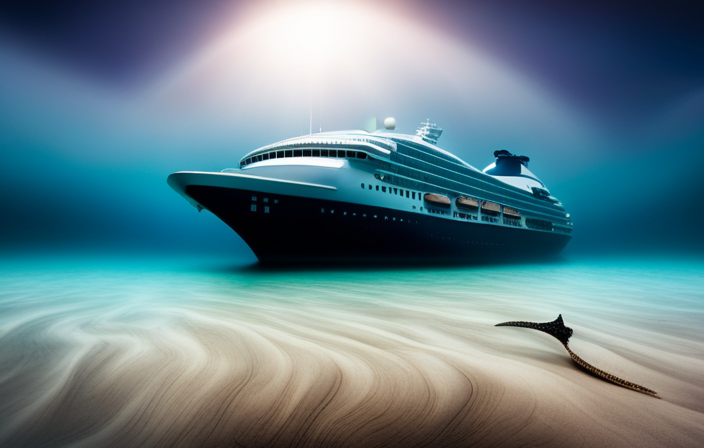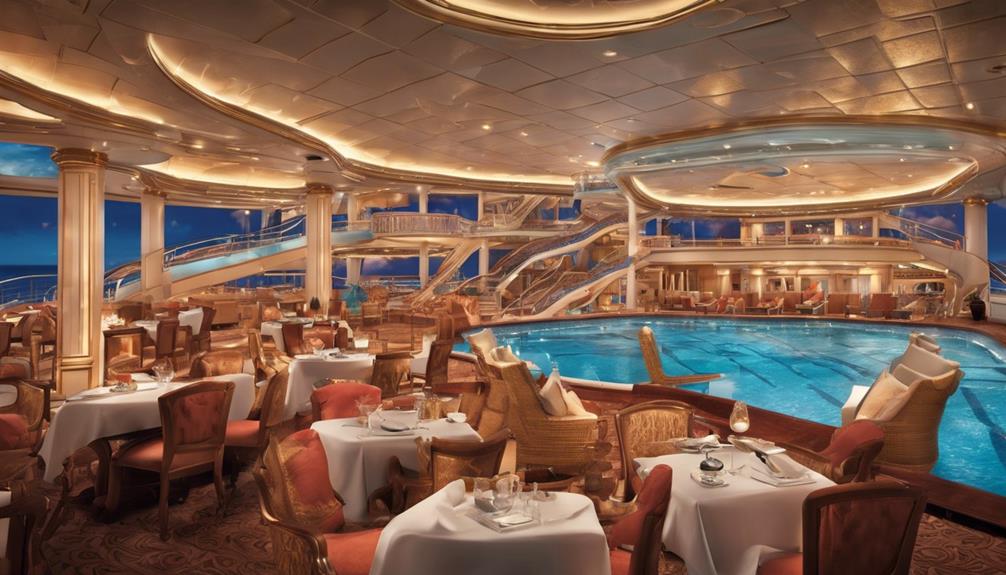You might believe that installing cruise control in your car will be very expensive. However, I want to dispel that myth. The truth is, the cost of adding cruise control is not as high as you may think, as it varies depending on different factors. I have thoroughly researched the details for you and am prepared to explain the costs involved in this article.
First, we’ll explore the benefits of having cruise control in your car. From improved fuel efficiency to reduced driver fatigue, cruise control can make your driving experience more comfortable and efficient.
Then, we’ll dive into the factors that can affect the cost of installation, such as the make and model of your car and whether you choose professional installation or a do-it-yourself approach.
So, if you’ve been considering adding cruise control to your vehicle, keep reading to find out how much it might cost and whether it’s worth the investment.
Key Takeaways
- Installing cruise control can improve fuel efficiency, reduce driver fatigue, promote safer driving, prevent speed fluctuations, and reduce the risk of speeding tickets.
- The cost of installing cruise control is affected by factors such as the type of vehicle, type of cruise control system, labor costs, vehicle compatibility, and complexity of the installation process.
- There are different types of cruise control systems available, including traditional speed control, adaptive cruise control, and intelligent cruise control, each with their own advantages.
- Professional installation is recommended over DIY installation due to the importance of automotive electrical knowledge, the risk of issues or malfunctions with DIY, and the availability of warranties with professional installation.
Benefits of Installing Cruise Control
Installing cruise control will make your long road trips feel like a relaxing drive along a smooth and endless highway. The benefits of cruise control are numerous and the advantages of using it are undeniable.
Firstly, it allows you to maintain a steady speed, which not only ensures a more comfortable ride but also improves fuel efficiency. By keeping your vehicle at a consistent speed, cruise control reduces the need for unnecessary acceleration and deceleration, resulting in less fuel consumption.
Additionally, cruise control promotes safer driving by preventing speed fluctuations and allowing you to focus more on the road ahead. It also reduces the risk of speeding tickets by keeping you within the legal limits.
Now, let’s delve into the factors affecting the cost of cruise control installation.
Factors Affecting the Cost of Cruise Control Installation
When considering the cost of installing cruise control, there are three main factors to take into account.
The first is the type of vehicle you have, as certain vehicles may require additional parts or modifications for the installation process.
The second factor is the type of cruise control system you choose, as more advanced systems may come with a higher price tag.
Lastly, labor costs should be considered, as the complexity of the installation and the expertise required can impact the overall cost.
Type of Vehicle
To determine the cost of installing cruise control, you’ll want to consider the type of vehicle you have. The type of vehicle you own plays a crucial role in determining the overall cost of the installation process. One of the key factors to consider is vehicle compatibility. Not all vehicles are designed to accommodate cruise control systems, and retrofitting may be required for older models. This can add to the overall cost of installation.
Additionally, the complexity of the installation process can vary depending on the make and model of your vehicle. Certain vehicles may have more intricate wiring systems or require additional modifications, which can increase the installation cost. Considering the type of vehicle you own is essential when determining the cost of installing cruise control.
Moving forward, let’s delve into the next section and explore the different types of cruise control systems available.
Type of Cruise Control System
There are various types of cruise control systems available that can enhance your driving experience.
The most common type is the traditional speed control system, which allows you to set a desired speed and maintain it without using the accelerator pedal.
Another option is adaptive cruise control, which uses sensors to automatically adjust your speed based on the distance between your vehicle and the one in front of you. This type of system can help maintain a safe following distance and reduce the risk of accidents.
Another advanced option is the intelligent cruise control, which not only adjusts your speed but also monitors the traffic conditions and adjusts accordingly.
Using cruise control has several advantages, such as reducing driver fatigue on long journeys and improving fuel efficiency.
Transitioning into the subsequent section, labor costs for installing cruise control can vary depending on the type of system chosen.
Labor Costs
Labor costs for adding this feature to your vehicle can vary depending on the type of system you choose. However, it’s worth exploring the options to enhance your driving experience.
The average labor involved in installing a cruise control system typically takes around 2 to 4 hours. The installation process involves several steps. These steps include locating and connecting to the vehicle’s throttle, brake, and speed sensors. Additionally, the technician will need to mount the cruise control module and program it to work with your specific vehicle.
It is important to note that some advanced systems may require additional labor and expertise. This can increase the overall cost.
Now let’s delve into the average price range for cruise control installation. This includes the cost of parts and labor.
Average Price Range for Cruise Control Installation
The average price range for cruise control installation is typically affordable and won’t break the bank. The installation process involves connecting wires to the vehicle’s throttle system and mounting the control unit. The time it takes to complete the job can vary depending on the make and model of the vehicle, but it usually takes around 1 to 2 hours for a skilled technician. It’s important to note that the cost of the cruise control kit itself is not included in this price range.
Transitioning into the next section about professional installation vs. DIY, it’s worth considering if you have the technical expertise and tools to install cruise control yourself.
Professional Installation vs. DIY
When it comes to installing cruise control, there are two main options to consider: professional installation or doing it yourself (DIY).
Professional installation offers several benefits. Firstly, it ensures that the cruise control system is installed correctly and functions properly, minimizing the risk of any issues or malfunctions. Additionally, professional installation often comes with a warranty, providing peace of mind in case any problems arise.
On the other hand, some individuals may choose to attempt a DIY installation. While this can be a cost-effective option, it requires knowledge of automotive electrical systems and can be challenging for those without experience.
Therefore, for a successful and hassle-free installation, professional installation is highly recommended.
Moving forward, let’s delve into researching and choosing the right cruise control system.
Researching and Choosing the Right Cruise Control System
- Start by considering your specific needs and preferences to find the perfect cruise control system for your vehicle.
- Research different brands and models of cruise control systems that are compatible with your vehicle make and model.
- Look for reviews and ratings from other customers to get an idea of the system’s reliability and performance.
- Compare prices from different retailers or online sellers to ensure you are getting the best deal.
- Explore all options, as some online platforms might offer discounts or promotions.
- Once you have gathered enough information and compared prices, you can make an informed decision on which cruise control system to purchase.
Transitioning into the next section, let’s now explore the additional features and upgrades that are available for cruise control systems.
Additional Features and Upgrades
Consider exploring the array of exciting upgrades and enhancements available for your cruise control system. These upgrades can transform your system into a high-tech marvel, giving it the sleek performance of a sports car effortlessly gliding down the open road.
To ensure compatibility and a seamless integration with your vehicle’s existing features, it’s crucial to select the right system. Some popular upgrades include adaptive cruise control, which automatically adjusts the speed to maintain a safe distance from the car in front. Another great feature is lane-keeping assist, which helps keep your vehicle centered in its lane.
In addition to these upgrades, you may want to consider a system with advanced safety features like collision warning and emergency braking. These features can provide an extra layer of protection on the road.
It’s important to note that the installation process and time required for these upgrades can vary depending on the complexity of your vehicle’s electrical system. However, the benefits they provide are well worth the investment.
Moving on to the next section about warranty and support, it’s essential to understand the coverage provided and the assistance available in case of any issues.
Warranty and Support
When considering additional features and upgrades for your cruise control installation, it’s important to also consider the warranty coverage and customer service support provided by the manufacturer or installer.
A comprehensive warranty will give you peace of mind knowing that any potential issues with your cruise control system will be covered. Look for a warranty that includes both parts and labor, as this will ensure that you’re protected against any unexpected expenses.
Customer service support is crucial in case you have any questions or concerns about your cruise control system. A reliable installer should offer prompt and knowledgeable assistance to address any issues you may encounter.
Now, let’s move on to the next section and discuss the process of finding a reliable installer for your cruise control installation.
Finding a Reliable Installer
To ensure a successful and hassle-free installation, you’ll need to find a reliable installer who can provide expert guidance and support throughout the process. When it comes to cruise control installation, the reliability of aftermarket systems is crucial.
To determine the reliability of a potential installer, it’s important to consider customer reviews and recommendations. Look for installers with a track record of satisfied customers who can vouch for their expertise and professionalism. Reading reviews and seeking recommendations from fellow car owners can give you valuable insights into the quality of service provided.
Once you have found a reliable installer, you can proceed with confidence knowing that you have made an informed choice. With a trustworthy professional by your side, you’ll be well on your way to enjoying the benefits of cruise control.
Speaking of benefits, let’s now delve into some tips for saving money on cruise control installation.
Tips for Saving Money on Cruise Control Installation
Finding a reliable installer for your cruise control system can be a game-changer for your driving experience, offering you the freedom to effortlessly glide down the open road while saving money in the process. When it comes to saving money on cruise control installation, here are three tips to keep in mind:
-
Shop around for the best price: Don’t settle for the first installer you come across. Take the time to compare prices from different shops or online providers. You may be surprised at the price differences.
-
Consider a DIY option: If you’re handy with cars and have some experience with electrical systems, installing cruise control yourself can save you a significant amount of money. Just make sure you have the necessary tools and follow the instructions carefully.
-
Look for promotions or discounts: Keep an eye out for special offers or discounts from installers. They may have seasonal promotions or bundle deals that can help you save even more.
By following these installation tips, you can ensure that you’re getting the best deal possible. In conclusion, is cruise control worth the investment? Let’s explore further.
Conclusion: Is Cruise Control Worth the Investment?
In the end, deciding whether or not to invest in cruise control boils down to enhancing your driving experience and enjoying the freedom of effortless road navigation. Before making a decision, it is important to consider the pros and cons of cruise control installation as well as a few factors that can influence your choice.
Table: Pros and Cons of Cruise Control Installation
| Pros | Cons |
|---|---|
| 1. Reduces driver fatigue | 1. Cost of installation |
| 2. Enhances fuel efficiency | 2. Limited use in congested traffic |
| 3. Maintains consistent speed | 3. Requires driver attention to road |
Before investing in cruise control, evaluate your driving habits and the type of roads you frequently encounter. If you often travel long distances on highways, cruise control can be beneficial for reducing fatigue and maintaining fuel efficiency. However, if you frequently encounter congested traffic or prefer to have full control over your vehicle, cruise control may not be worth the investment. Ultimately, the decision should be based on your personal preferences and driving needs.
Frequently Asked Questions
Are there any potential drawbacks or disadvantages to installing cruise control?
Installing cruise control has potential risks. One interesting statistic is that it can reduce fuel efficiency by up to 14%. This impact on fuel efficiency should be considered when deciding whether to install cruise control.
Can cruise control be installed on any type of vehicle?
Cruise control can be installed on most vehicles. The installation process involves connecting the control module to the vehicle’s throttle system. The benefits of cruise control include improved fuel efficiency and reduced driver fatigue on long trips.
How long does it typically take to install cruise control?
The installation process for cruise control typically takes around 2-4 hours. It involves connecting the control module to the vehicle’s electrical system and programming it to function properly. A cost estimation can be provided by contacting a professional installer.
Are there any maintenance or servicing requirements for cruise control systems?
Maintenance requirements for cruise control systems include periodic inspections, cleaning, and lubrication of components. Common issues may include malfunctioning switches, sensor failures, or wiring problems. Regular servicing can help prevent these issues and ensure optimal performance.
Can cruise control be installed on a vehicle with a manual transmission?
Installing cruise control on a manual transmission car has its pros and cons. It can provide convenience and reduce fatigue on long drives, but may require additional modifications and is not suitable for all driving conditions.
Conclusion
In conclusion, after carefully considering the benefits, factors affecting cost, and options for installation, it is evident that installing cruise control is a worthwhile investment.
It not only enhances driving experience but also promotes safety and fuel efficiency.
Like a steady hand guiding a ship through turbulent waters, cruise control provides a sense of control and stability on the road.
By conducting thorough research, choosing the right system, and finding a reliable installer, one can enjoy the convenience and advantages of cruise control for years to come.
Meet Asra, a talented and adventurous writer who infuses her passion for exploration into every word she writes. Asra’s love for storytelling and her insatiable curiosity about the world make her an invaluable asset to the Voyager Info team.
From a young age, Asra was drawn to the power of words and their ability to transport readers to far-off lands and magical realms. Her fascination with travel and cultures from around the globe fueled her desire to become a travel writer, and she set out on a journey to turn her dreams into reality.











